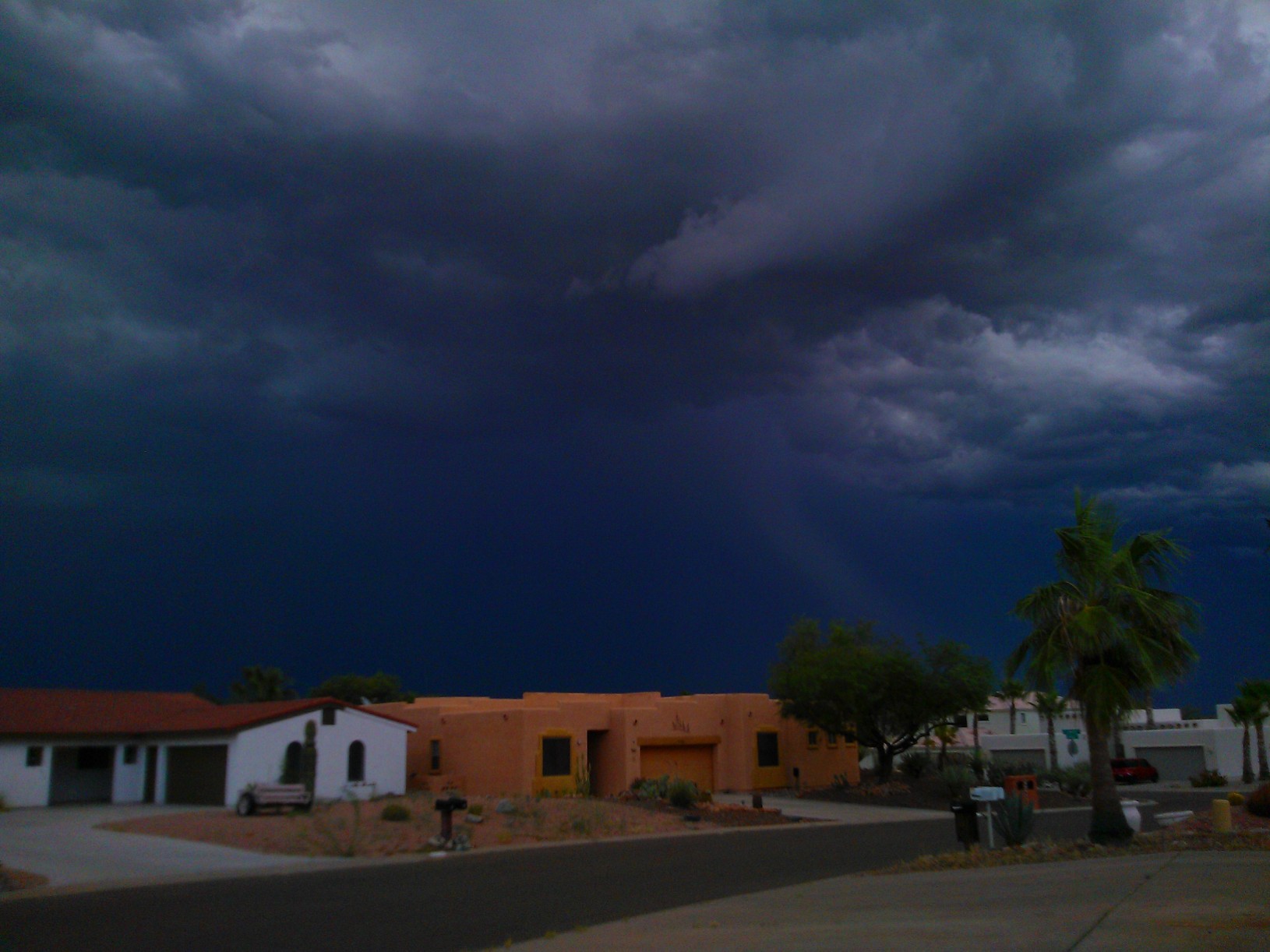We live in arguably the most beautiful desert in the world, the Sonoran Desert, which stretches from Central Arizona down into Mexico.
The Sonoran Desert is typically hot and dry, but during the monsoon temperatures drop and humidity rises.
 Annie Kwartler
Annie KwartlerThe monsoon is not a storm, it's a seasonal shift in our winds that causes storms to form.
In fact, "monsoon" is defined as any wind that reverses direction seasonally and this happens in various places around the world.
In late June and early July, wind patterns to our south over Mexico begin to shift. Winds flow out of the south and southeast, bringing in moisture from the Pacific Ocean, the Gulf of California and the Gulf of Mexico.
That moisture rises with our intense summer heat and produces thunderstorms across Arizona.
These monsoon storms can produce heavy rain, dust storms, lightning, strong winds and flash floods.
Prior to 2008, we tracked dew point temperatures to see when enough moisture had arrived to call it the monsoon. The average start date was July 7, usually lasting through mid-September.
Now, the National Weather Service has set specific dates to our "monsoon season", similar to hurricane season, to help people prepare for the threats monsoon storms could bring. It begins each year on June 15 and lasts until September 30.
While our summer monsoon can be exciting and even beautiful, storms can pop up quickly and cause major damage.
Early notice is key to saving lives and property, so count on the ABC15 Forecasters to take action to keep you and your family safe this summer with the power of ABC15 Desert Doppler radar.








